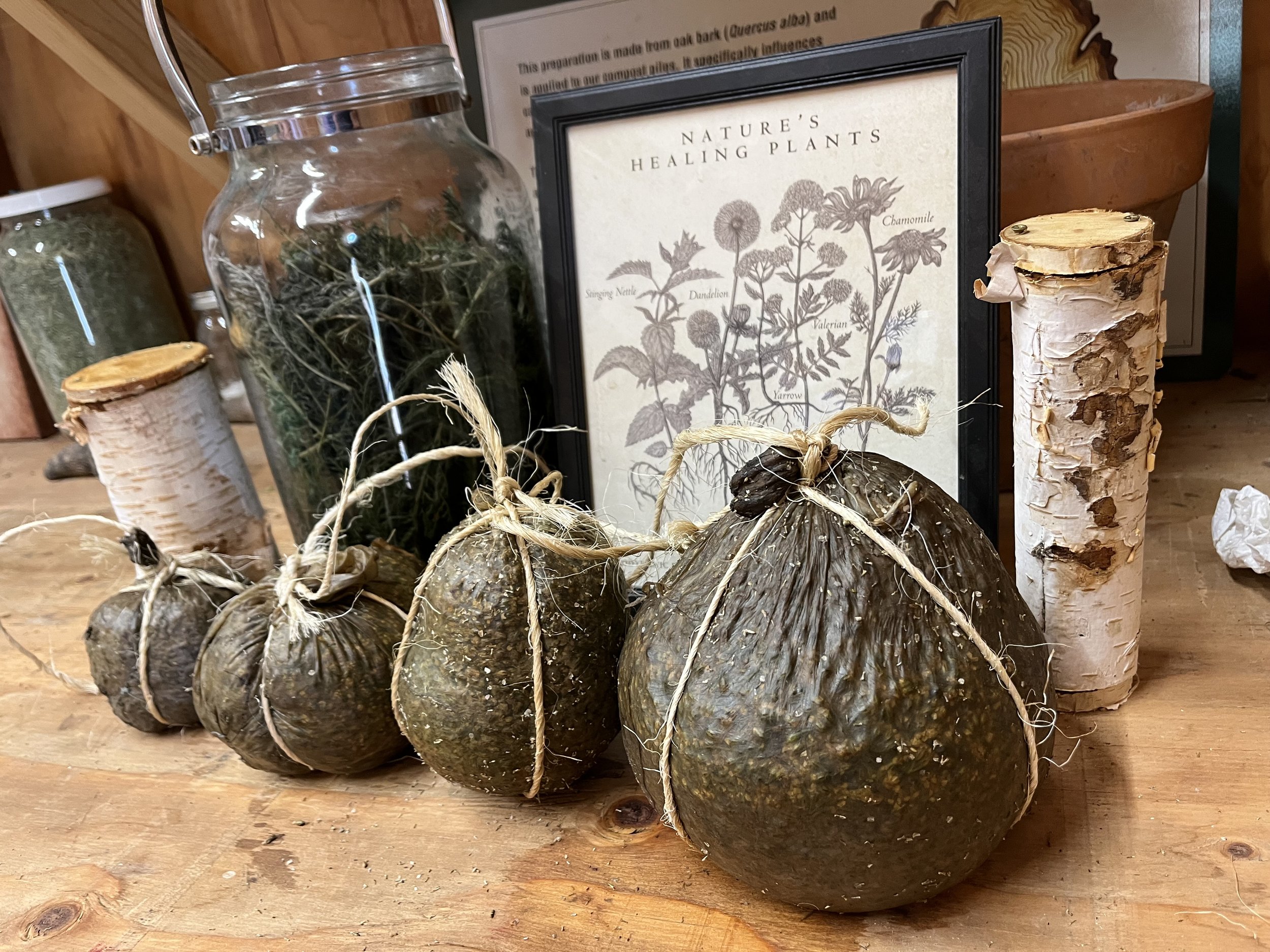The Biodynamic Compost Preparations
Every fall, our next-door neighbors at Noble Organic Dairy Farm deliver 400 tons of cow manure to us at Troon Vineyard and Farm. To this treasure, we add the pomace from our harvest, kitchen scraps, garden, and landscaping residue, and biodynamic hay we grow on our farm. Then, when the piles are constructed, the last additions transform these raw materials from compost to biodynamic compost.
To this massive mass of refuse and manure, we add minuscule quantities — homeopathic quantities — of the biodynamic compost preparations: 502 Yarrow, 503 Camomile, 504 Stinging Nettle, 505 Oak Bark, 506 Dandelion, and 507 Valerian. While cow horn manure — BD 500 — is the media’s symbol of the biodynamic preparations, these six compost preparations are the building blocks of biodynamics - the soul of our soils.
The preparations are hard to understand, and we don’t pretend we do. There is much that is not understood in agriculture. Working with the preparations is a weaving together of intentions, experiences, microbiology, and natural processes.
We are striving to produce all of our biodynamic preparations on our farm. As of this year, the only one we have yet to produce is the 505 Oak Bark, which we will produce next year. In biodynamics, the process and intention are part of the results.
First, you grow the plants, the botanicals that are the base of the preparations. Then, nature transforms them. Each interaction with your farm’s microbiology captures nature’s energies. That is the point of biodynamics. The making of the preps focuses your intentions. Growing the botanicals adds biodiversity, and burying them connects them to your farm. Applying them completes that circle. That’s the part that works. Nature works in cycles — in circles. Our work is to help the circle complete itself — not invent our own geometry.
Native Americans used yarrow to treat wounds and colds. The use of chamomile and valerian to improve sleep and reduce anxiety is well known. Stinging nettle has been used for centuries to treat painful muscles, joints, arthritis, and anemia. Oak bark and dandelion teas were used to aid appetite and digestion. For millennia, these botanicals have been recognized as natural medicines. Rudolf Steiner was inspired to focus on natural herbs by meeting Felix Kogutski, an Austrian herb-gatherer who sold these plants to pharmacies and medical schools. Steiner died in 1925, shortly after outlining the preparations. Dr. Ehrenfried Pfeiffer did the real work of developing them. His book, published in 1938, took Stiener’s original ideas from his lectures in 1924, researched them and made them practical, and provided the foundation on which preparation-making exists today.
Making and using the biodynamic preparations makes you feel a part of nature’s cycles. We can’t understand all of them, but we can still work harmoniously with them. We need to honor what we don’t understand and the things that work without destroying the natural systems that have evolved on Earth.
There is another intangible when making and using the preparations — it’s fun. There is not a better team-building exercise than picking dandelions and the other flowers together. Even filling cow horns with manure becomes a group celebration.
Energies of all kinds enrich your farm.
A video look at making Biodynamic Preparation 502
